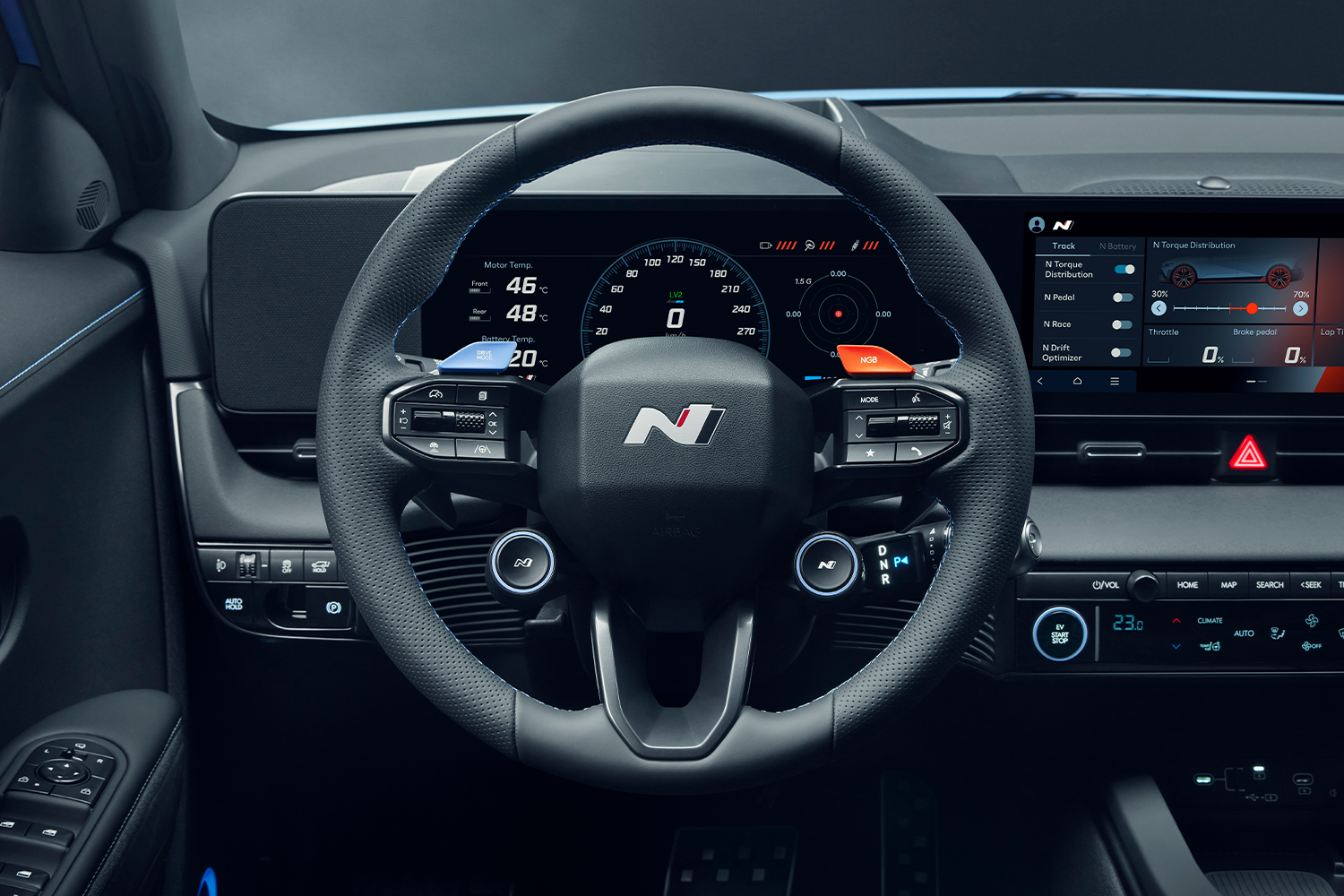
How do traction control systems work and when should you turn off traction control? Learn about performance, acceleration and braking with HDX.
The stated fuel consumption and CO₂ emission values were determined according to the prescribed WLTP procedure. More at hyundai.de/wltp
1) Power consumption for the IONIQ 5 N 448 kW (609 hp) all-wheel drive electric 84 kWh battery, reduction gearbox, 21-inch forged wheels according to the more realistic WLTP values: combined: 21.2 kWh/100 km; electric range with full battery: 448 km; CO₂ emissions combined: 0 g/km; CO₂ efficiency class: A+++.
2) Fuel consumption for the Hyundai i20 N 2.0 T-GDI 150 kW (204 hp) front-wheel drive petrol, N DCT: combined: 7.0 l/100 km; CO₂ emission combined: 158 g/km; CO₂ efficiency class: F.
3) Fuel consumption for the Hyundai i30 N 2.0 T-GDI 206 kW (280 hp) front-wheel drive petrol, N DCT: combined: 8.4 l/100 km; CO₂ emission combined: 191 g/km; CO₂ efficiency class: F.
4) Fuel consumption for the Hyundai i30 N Fastback N 2.0 Performance T-GDI 206 kW (280 hp) front-wheel drive petrol, N DCT: combined: 8.0 l/100 km; CO₂ emission combined: 182 g/km; CO₂ efficiency class: F.
5) Fuel consumption for the Hyundai TUCSON 1.6 T-GDI Plug-in-Hybrid, 195kW (265 hp): combined/weighted: 1.4 l/100 km; electricity consumption combined/weighted: 17.7 kWh/100 km; range with full battery: 62 km; CO2 emissions combined: 31 g/km; CO2 efficiency class: A+.